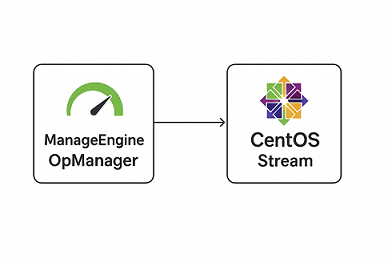How to Install ManageEngine on CentOS Stream 10 – A Complete Guide

This guide walks you through the step-by-step installation of ManageEngine on CentOS Stream, based on my hands-on experience setting it up for our team’s IT monitoring needs.
Table of Contents
- Introduction – Why We’re Installing ManageEngine on CentOS Stream
- What is ManageEngine? – Quick Overview
- Why CentOS Stream? – My Take on the OS Choice
- System Requirements – Don’t Skip This Part
- Preparing Your CentOS Stream Environment – Getting Ready for Install
- Downloading ManageEngine – Where and How
- Installing ManageEngine on CentOS Stream – Step-by-Step
- Starting and Accessing ManageEngine – First Login
- Basic Post-Installation Configurations – Making It Work for Us
- Common Installation Issues and Fixes – Lessons Learned
- Security & Optimization Tips – Keeping It Stable and Secure
- Summary – Final Thoughts
1. Introduction – Why We’re Installing ManageEngine on CentOS Stream 10
Alright team, here’s the deal: we’ve been juggling multiple monitoring tools, but it’s time to consolidate.
We’re setting up ManageEngine OpManager on CentOS Stream to have a single, unified monitoring platform for our network, servers, and services. I’ve done the install on my test server, and I’m documenting every step so we don’t repeat the same mistakes I made the first time.
2. What is ManageEngine? – Quick Overview
For those who are new, ManageEngine is like the Swiss army knife of IT management.
With OpManager, we get network monitoring, fault detection, performance analytics, and automated alerts. Think of it as our 24/7 network health watchdog.
3. Why CentOS Stream? – My Take on the OS Choice
I chose CentOS Stream because:
- It’s stable and supported in enterprise environments
- Lightweight compared to Windows Server
- Excellent for running services in the background with low resource usage
- Easier to automate with shell scripts
- Security updates are solid and predictable
Plus, most of our infrastructure is already Linux-based, so it just makes sense.
4. System Requirements – Don’t Skip This Part
Before installing, make sure we’re not underpowered:
| Requirement | Minimum | Recommended |
|---|---|---|
| CPU | 2 cores | 4+ cores |
| RAM | 4 GB | 8 GB+ |
| Storage | 20 GB | 50 GB+ SSD |
| OS | CentOS Stream 8 or 9 | CentOS Stream 9 |
| Network | Static IP | Static IP |
Tip: If running in production, double the RAM and CPU for smoother performance.
5. Preparing Your CentOS Stream Environment
Let’s update the system and make sure required packages are installed.
sudo dnf update -y
sudo dnf install wget curl unzip java-11-openjdk -yWe’re installing Java 11 because most ManageEngine products depend on it.
6. Downloading ManageEngine – Where and How
Go to the official ManageEngine OpManager download page:
https://www.manageengine.com/network-monitoring/download.html
Or use wget directly (replace version number if needed):
wget https://downloads.manageengine.com/network-monitoring/123456789/ManageEngine_OpManager_Linux_64bit.bin7. Installing ManageEngine on CentOS Stream – Step-by-Step
- Make the installer executable:
chmod +x ManageEngine_OpManager_Linux_64bit.bin- Run the installer:
sudo ./ManageEngine_OpManager_Linux_64bit.bin- Follow the prompts:
- Accept license agreement
- Choose installation directory (
/opt/ManageEngine/OpManagerrecommended) - Set admin username & password
- Select port (default: 8060)
8.starting-accessing-manageengine
Start the service:
cd /opt/ManageEngine/OpManager/bin
./startOpManager.shAccess the dashboard from your browser:
http://<server-ip>:8060Log in with the admin credentials you set during installation.
9. Basic Post-Installation Configurations – Making It Work for Us
- Add our network ranges for auto-discovery
- Configure SNMP credentials for switches/routers
- Enable email/SMS alerts for downtime notifications
- Set up device groups for better organization
10. Common Installation Issues and Fixes – Lessons Learned
- Port already in use: Change the listening port in
server.xml - Java not found: Ensure JAVA_HOME is set correctly
- Slow UI load: Increase JVM heap size in OpManager configuration
11. Security & Optimization Tips – Keeping It Stable and Secure
- Run OpManager under a dedicated non-root user
- Enable firewall rules to allow only trusted IPs
- Schedule regular backups of OpManager configuration and data
- Keep CentOS Stream and OpManager updated
12. Conclusion – Final Thoughts
Installing ManageEngine OpManager on CentOS Stream is straightforward once you know the steps.
We now have a centralized, powerful monitoring tool running on a stable OS.
With this setup, we can monitor everything from network switches to application servers without juggling multiple dashboards.